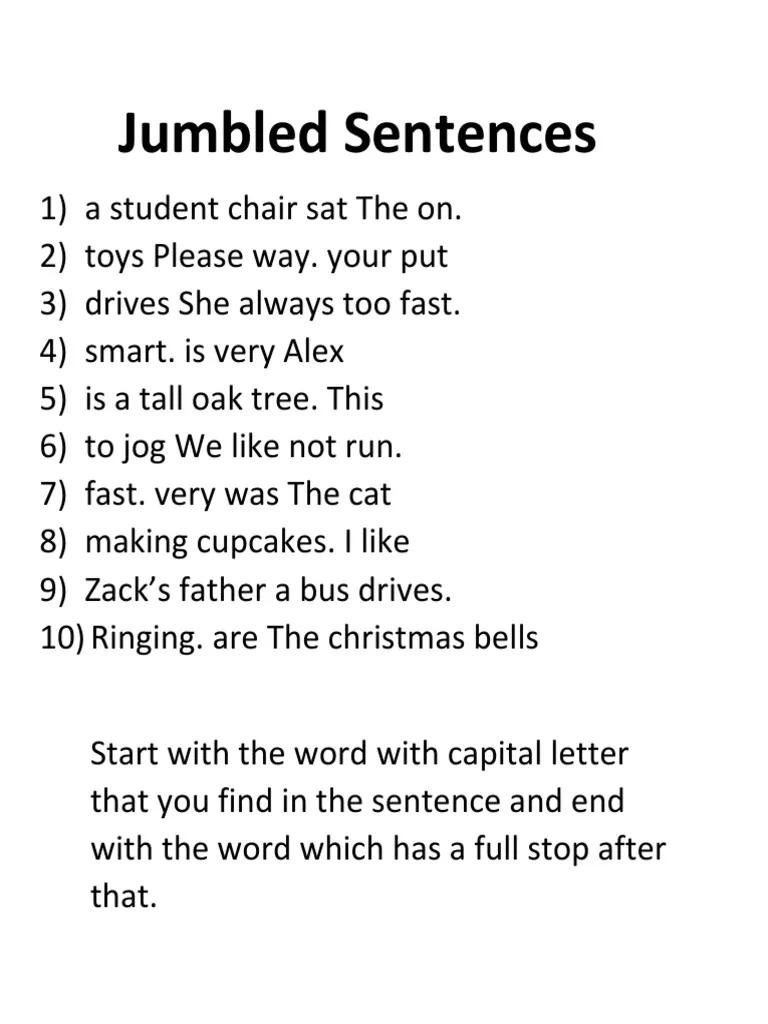Do your students struggle to read and spell words containing digraphs like sh, ch, th, and wh?
Teaching these unique letter combinations can be challenging, as young learners often struggle to grasp that two letters can make a single sound.
Luckily, you can use several fun and engaging activities to help your students master digraph words and improve their reading and writing skills.
In this blog post, we’ll explore 11 exciting ways to teach digraph words to capture your student’s attention and make learning enjoyable.
From interactive games to hands-on activities and digital tools, you’ll find many ideas to help your students become confident readers and spellers.
Let’s make learning digraphs a fun and rewarding experience for your class!
11 Engaging Ways to Teach Digraph Words
1. Digraph Mnemonic Flashcards
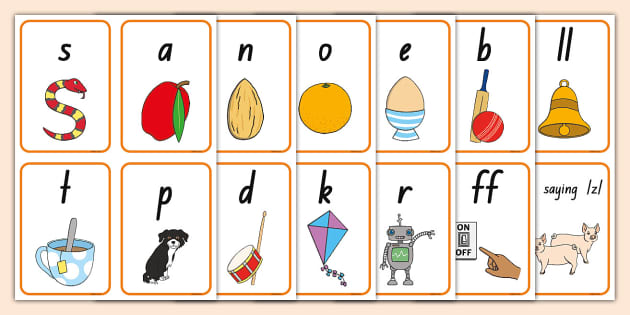
Visual aids can significantly improve memory retention in children, making them a valuable tool for teaching digraphs.
Mnemonic flashcards combine visual elements with memory aids, helping kids remember the sounds and spellings of digraphs in a fun, engaging way.
Mnemonic flashcards are easy to create and use in various settings, such as the classroom or home.
To make your flashcards, choose a digraph (e.g., ‘ch’), find or draw an image that starts with that sound (e.g., a chair), and write the digraph and word on the card.
For example:
- ‘ch’ – picture of a chair with ‘chair’ written on the card
- ‘sh’ – picture of a ship with ‘ship’ written on the card
- ‘th’ – picture of a thumb with ‘thumb’ written on the card
Once you have your flashcards ready, try these fun activities to help your students master digraph words:
“See and Act” Game
- Show a flashcard to the child.
- Have them say the digraph sound and word aloud.
- Ask the child to act out or mimic the word (e.g., pretend to sit in a chair for ‘chair’).
Memory Matching Game
- Lay the cards face down.
- Players flip over two cards, trying to match the digraph with the correct image and word.
- The player says the digraph and word aloud when a match is made.
Flashcard Storytelling
- Pick a few random flashcards.
- Encourage the child to use the words on the cards to tell a short story.
- This reinforces the words and their meanings in a fun, creative way.
2. Digraph Clip Cards
Digraph clip cards offer an interactive, hands-on learning experience that helps children identify and practice digraph sounds.
These cards combine visual learning with physical activity, keeping students engaged and actively participating in the learning process.
Clip cards feature an image and multiple digraph options, such as ‘sh,’ ‘ch,’ and ‘th.’
The child’s task is to identify the correct digraph that matches the picture and use a clothespin or clip to mark their answer.
For example:
- A picture of a ship with options ‘sh,’ ‘ch,’ ‘th’ – the child clips ‘sh’
- A picture of a chair with options ‘sh,’ ‘ch,’ ‘th’ – the child clips ‘ch’
- A picture of a thumb with options ‘sh,’ ‘ch,’ ‘th’ – the child clips ‘th’
Benefits of Using Clip Cards
- Improves fine motor skills through the use of clothespins or clips
- Engages students in active learning, keeping them focused and interested
- Provides instant feedback, allowing children to self-correct and learn from their mistakes
3. Digraph Anchor Charts
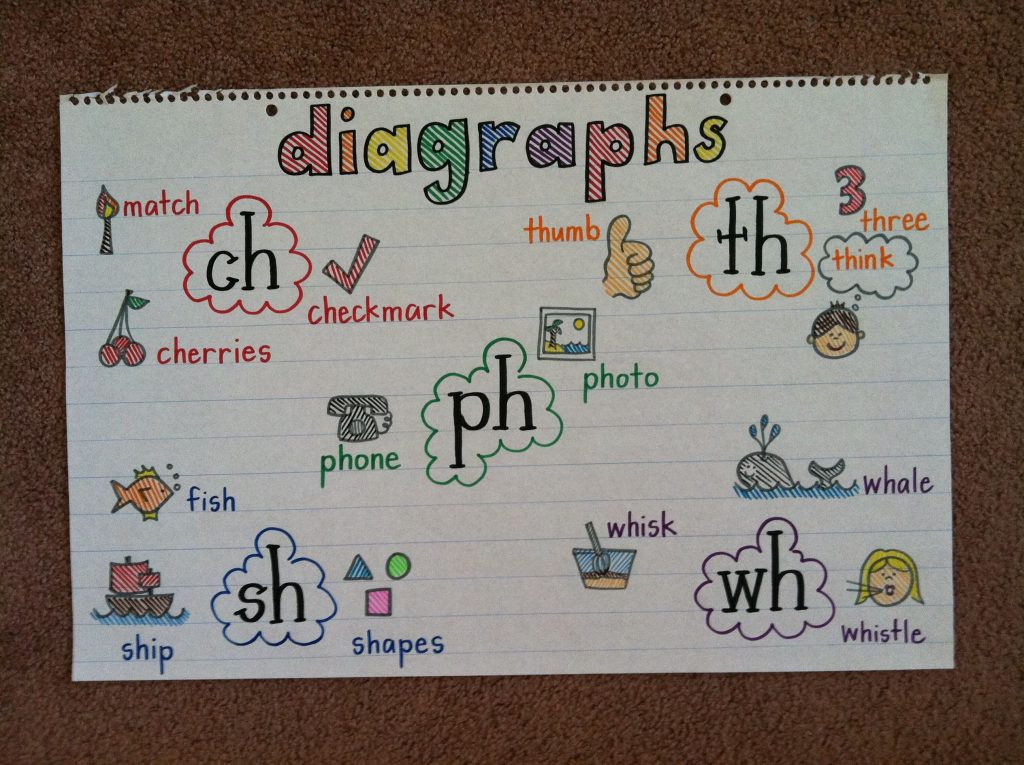
Visual aids like anchor charts can significantly reinforce learning by giving students a quick reference tool they can easily access whenever needed.
Anchor charts constantly remind students of key concepts, helping students recall digraph sounds and spellings through repeated exposure.
For example:
- A chart with ‘sh’ at the top, followed by images and words like ‘ship,’ ‘shell,’ ‘shark’
- A chart with ‘ch’ at the top, followed by pictures and words like ‘chair,’ ‘cheese,’ ‘chick’
How to Create an Effective Digraph Anchor Chart
- Choose a digraph (e.g., ‘ch,’ ‘sh,’ ‘th’).
- Include colorful images and words that start with the digraph.
- Write the digraph prominently and add example words.
- Use large fonts and clear visuals for easy readability.
4. Digraph Picture Sorting
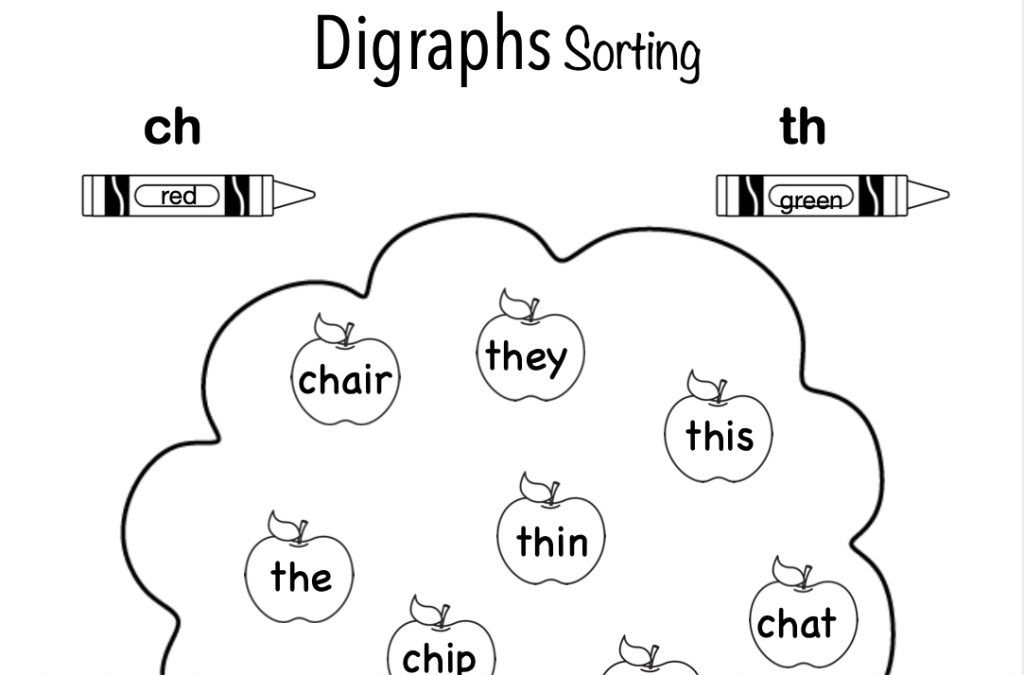
Sorting activities make learning digraphs fun and interactive for young children.
Kids engage in hands-on learning by categorizing pictures based on their digraph sounds, which is essential for their development and understanding of language concepts.
Digraph picture sorting involves gathering or creating picture cards representing words with different digraphs, such as ‘sh,’ ‘ch,’ and ‘th.’
Children then sort these pictures into categories based on the digraph sound.
For example:
- A picture of a sheep goes in the ‘sh’ category
- A picture of a chair goes in the ‘ch’ category
- A picture of a thumb goes in the ‘th’ category
Benefits of Picture Sorting Activity
- Enhances visual and auditory learning by connecting images with sounds
- Encourages active participation, keeping children engaged and focused
- Helps with memory retention and recognition of digraph sounds
How to Conduct the Sorting Activity
- Prepare picture cards and sorting mats labeled with different digraphs.
- Have the children sort the picture cards into the correct categories based on the digraph sound.
- Encourage them to say the word aloud as they sort the pictures.
5. I Spy Sheets
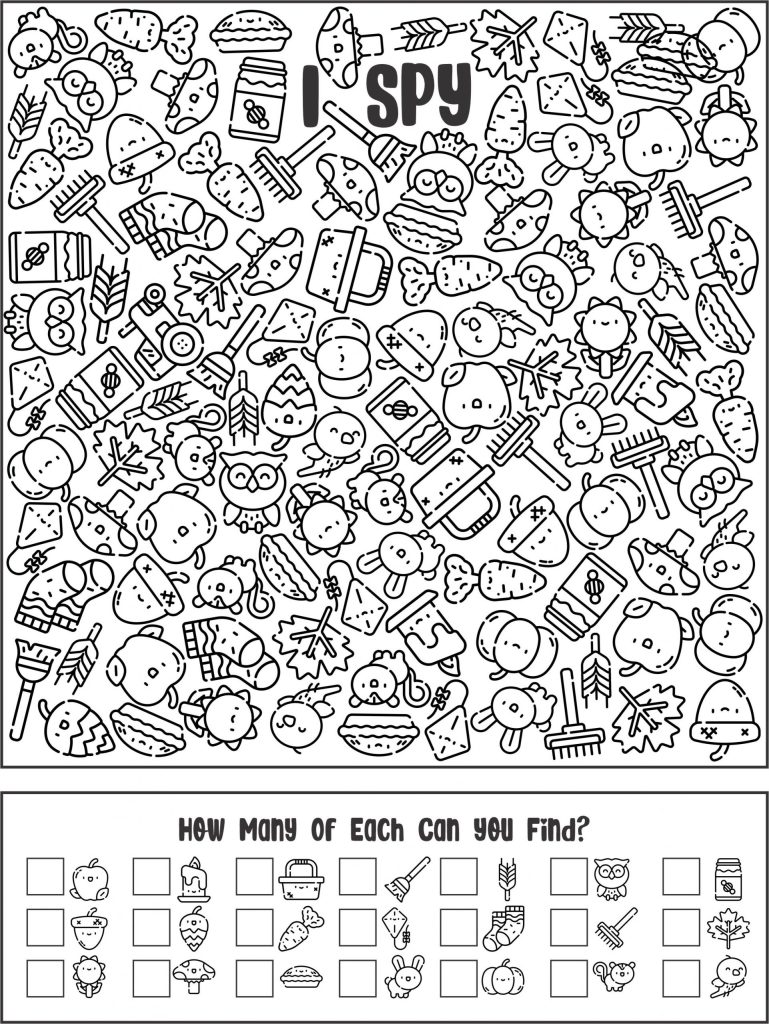
“I Spy” activities are incredibly engaging and appealing to young learners.
These interactive sheets make learning fun and effective by focusing on identifying digraphs within various images.
I Spy sheets contain multiple pictures, and children must find and mark the images that feature the target digraph, such as ‘sh,’ ‘ch,’ or ‘th.’
This activity encourages visual scanning, attention to detail, and independent learning while making identifying digraphs enjoyable and game-like.
For example:
- A sheet with pictures of a ship, shoe, and fish for ‘sh’
- A sheet with images of a chair, cheese, and chicken for ‘ch’
- A sheet with pictures of a thumb, throne, and bath for ‘th’
How to Use I Spy Sheets
- Provide children with a sheet filled with images.
- Ask them to find, circle, or mark the pictures containing the target digraph.
- Review the findings together to reinforce learning.
6. Digraph Snakes & Ladders

Combining learning with familiar games can significantly boost engagement and retention.
Digraph Snakes & Ladders integrates digraph practice into the classic board game format, creating a fun and interactive way for children to master these essential phonics skills.
In this educational version of the game, each space on the board includes a word containing a digraph.
As players roll the dice and move their pieces, they must read the word and identify the digraph when they land on a space.
Like in the traditional game, landing on a snake means sliding down, while landing on a ladder allows players to climb up.
Examples of digraph words on the board:
- ‘ship’ for ‘sh’
- ‘chair’ for ‘ch’
- ‘thumb’ for ‘th’
Benefits of Playing Digraph Snakes & Ladders
- It makes learning digraphs fun and interactive
- Provides a competitive yet educational environment
- Reinforces digraph recognition and usage through repeated exposure
7. Jumbled Sentences
Interactive and challenging activities, like using jumbled sentences, can significantly enhance learning and improve sentence construction skills.
To create jumbled sentences, write simple sentences that include target digraph words, such as ‘The ship is big.’
Then, print or write each word of the sentence on separate cards or strips of paper.
Mix up the order of the words and have students reorder them to form the correct sentence.
Examples of jumbled sentences:
- Sentence: ‘The fish swims fast.’ Jumbled: ‘swims The fast fish.’
- Sentence: ‘The chair is blue.’ Jumbled: ‘is The blue chair.’
- Sentence: ‘Sheep eat grass.’ Jumbled: ‘grass eat Sheep.’
Benefits of This Activity
- Encourages critical thinking and problem-solving skills
- Reinforces understanding of sentence structure and grammar
- Provides practice in identifying and using digraphs in context
8. Draw the Words
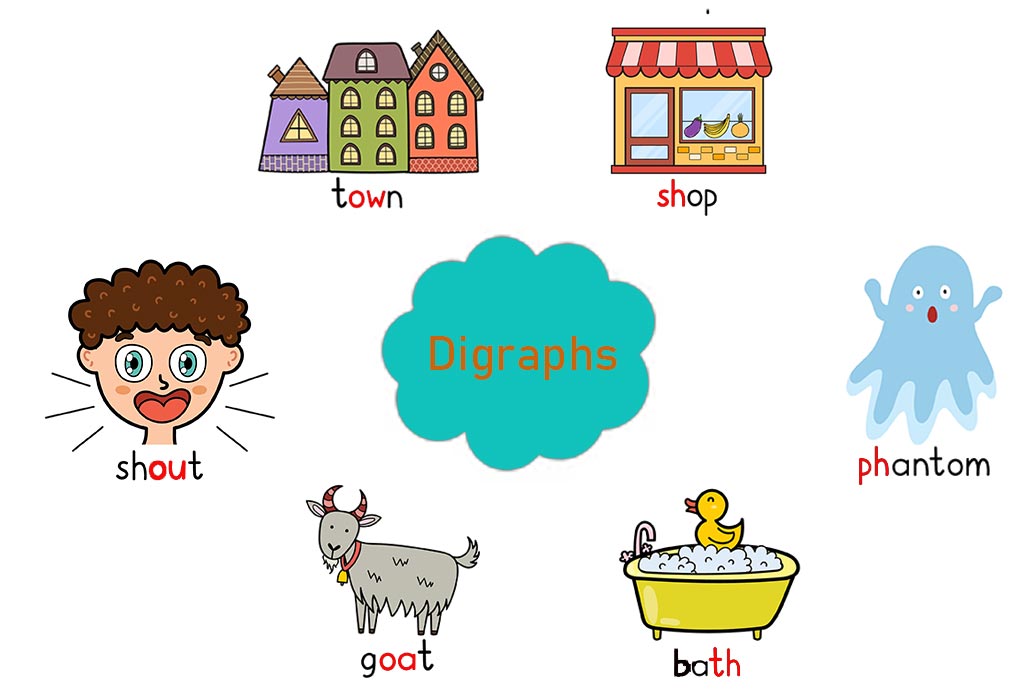
Integrating art with literacy can significantly enhance learning, and the “Draw the Words” activity is an excellent example.
By having students draw images corresponding to digraph words, you can reinforce their understanding and memorization of these essential phonics skills.
How to Conduct the Draw the Words Activity
- Provide students with a list of digraph words (e.g., ‘ship,’ ‘chair,’ ‘thumb’).
- Ask them to draw a picture that represents each word.
- Encourage them to label their drawings with the corresponding digraph word.
Examples of Draw the Words:
- Drawing a ship for the word ‘ship’
- Drawing a chair for the word ‘chair’
- Drawing a thumb for the word ‘thumb’
Benefits of This Activity
- Enhances creativity and fine motor skills
- Reinforces visual learning and word recognition
- It makes learning digraphs more engaging and enjoyable
9. Word Hunts
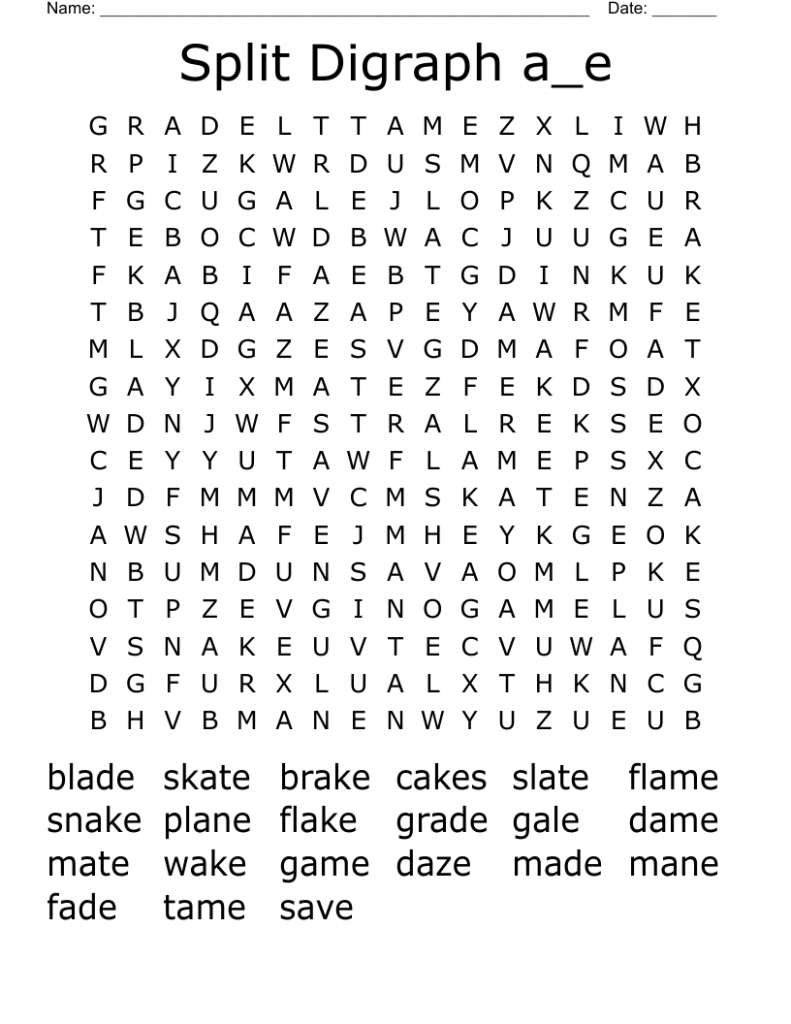
Active learning can make literacy fun and dynamic, and using word hunts to reinforce digraph learning is an excellent example.
By encouraging students to find and collect words with specific digraphs, you can create an interactive and engaging experience that enhances their phonics skills.
Examples of word cards to hide:
- ‘Ship’ for ‘sh’
- ‘Chair’ for ‘ch’
- ‘Thumb’ for ‘th’
How to Organize a Word Hunt
- Choose specific digraphs to focus on (e.g., ‘sh,’ ‘ch,’ ‘th’).
- Prepare word cards or lists with words containing the target digraphs.
- Hide the word cards around the classroom or designated area.
- Provide students with a checklist or worksheet to record the words they find.
Benefits of Word Hunts
- Encourages movement and physical activity
- Enhances observational skills and attention to detail
- It makes learning digraphs an interactive and engaging experience
10. Digraph Mazes

Mazes can be both fun and educational, combining problem-solving with phonics practice.
Digraph mazes can reinforce digraph sounds engagingly and interactively, helping your students master these essential skills.
Digraph mazes require students to follow paths based on identifying digraph sounds in words. The correct path is determined by words containing specific digraphs, such as ‘sh,’ ‘ch,’ or ‘th.’ Students must identify each word’s correct digraph to navigate the maze successfully.
Examples of digraph mazes:
- A maze where students follow the path through words containing ‘sh’ to reach the end
- A maze where the correct path is determined by words with ‘ch’
Benefits of Using Digraph Mazes
- Enhances problem-solving and critical thinking skills
- Reinforces knowledge of digraph sounds in a fun and engaging way
- It provides an interactive learning experience
11. Interactive Digital Activities

Integrating technology in education can significantly enhance learning experiences, and using interactive digital tools to practice digraphs is an excellent example of this.
Digital tools like Boom Cards offer self-checking activities that provide students immediate feedback, making learning digraphs fun and engaging.
Boom Cards are digital task cards that function through an educational platform or app.
Teachers can choose or create decks of cards focusing on specific digraphs, such as ‘sh,’ ‘ch,’ or ‘th.’
Students complete the digital cards, which often include matching, sorting, and filling in the blanks.
Examples of Boom Card activities:
- Matching words with pictures based on digraph sounds
- Sorting words into correct digraph categories
- Filling in missing digraphs in words
Advantages of Using Digital Tools for Learning Digraphs
- Provides instant feedback, allowing students to correct mistakes immediately
- Engages students with interactive and multimedia elements
- Offers a variety of activities that can cater to different learning styles
Conclusion
Teaching digraph words can be an exciting and rewarding experience for educators and students.
Using fun activities like mnemonic flashcards, digital tools, and hands-on games can help your students easily master phonics skills.
The key to successful digraph instruction is to make learning enjoyable and interactive, allowing children to explore and practice in a supportive environment.
As you implement these 11 activities into your teaching routine, you’ll be amazed at your students’ progress in their reading and writing abilities.
So, welcome the power of play and watch your students become confident and enthusiastic learners, ready to tackle any digraph word that comes their way!


